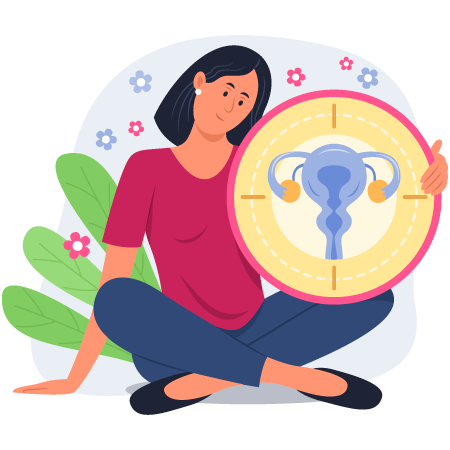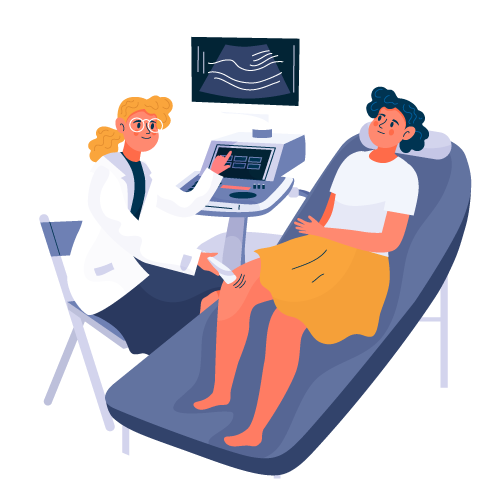
What is Hysteroscopy?
Hysteroscopy is a minimally invasive procedure that allows a healthcare provider to examine the inside of the uterus (womb) and cervix (the opening to the uterus). A thin, lighted instrument called a hysteroscope is inserted through the vagina to visualize the uterine cavity and diagnose or treat various conditions.
Hysteroscopy procedure step-by-step
A hysteroscopy typically involves these steps:
- Preparation: You may be asked to empty your bladder and avoid eating or drinking anything for a few hours beforehand.
- Positioning: You’ll be placed in a position similar to a Pap smear exam.
- Cervical dilation: The cervix may be gently dilated to allow the hysteroscope to pass through.
- Fluid introduction: Sterile fluid (saline solution) may be inserted into the uterus to expand it for better visualization.
- Hysteroscope insertion: The thin, lighted hysteroscope is inserted through the vagina and cervix into the uterus.
- Examination or treatment: The doctor can examine the uterine lining, take tissue samples (biopsy) if needed, or perform procedures like removing polyps or fibroids.
- Instrument removal: The hysteroscope and other instruments are removed.
- Recovery: You’ll be monitored for a short period before being discharged.


Hysteroscopy procedure cost 2024
The cost of a hysteroscopy varies depending on procedure type, facility fees, physician’s fees, anesthesia type, and location. Diagnostic procedures typically cost less than operative procedures. Hospitals generally have higher costs than outpatient centers. In India (2024), a diagnostic hysteroscopy might range from ₹20,000 to ₹50,000, while an operative hysteroscopy could cost anywhere from ₹40,000 to ₹100,000 or more. Consult your doctor and insurance company for cost estimates specific to your situation.
Hysteroscopy for infertility treatment
Hysteroscopy can be a valuable tool in diagnosing and treating some causes of infertility in women. Here’s how it can help:
- Identifying abnormalities: Hysteroscopy can reveal uterine polyps, fibroids, scar tissue (adhesions), or congenital abnormalities that may hinder implantation.
- Removing blockages: Blockages in the fallopian tubes can sometimes be opened using a hysteroscope.
- Biopsy for diagnosis: Tissue samples (biopsies) can be obtained during a hysteroscopy to diagnose conditions like endometriosis.
Hysteroscopy vs D&C (Dilation and Curettage)
Both hysteroscopy and D&C involve accessing the inside of the uterus. However, there are key differences:
- Purpose: Hysteroscopy is primarily for visualization and diagnosis, while D&C is often used for removing tissue (e.g., after a miscarriage or for heavy bleeding).
- Procedure: D&C typically uses a curette, a scraping tool, to remove tissue. Hysteroscopy may use other instruments besides visualization.
- Anesthesia: D&C often requires general anesthesia, while hysteroscopy may use local anesthesia or none at all.
Ultimately, the best procedure for you depends on your specific situation. Consulting with a healthcare provider can help determine if hysteroscopy is the right course of action for your needs.

FAQs
2. What can Hysteroscopy diagnose?
Hysteroscopy can diagnose various uterine conditions, including polyps, fibroids, endometriosis, scarring, and abnormalities.
3. What are the benefits of Hysteroscopy?
Hysteroscopy offers several advantages over traditional surgery:
- Minimally invasive: Smaller incisions and quicker recovery.
- Outpatient procedure: Often doesn't require an overnight hospital stay.
- Visualization and diagnosis: Allows direct visualization of the uterus for accurate diagnosis.
- Treatment options: Can sometimes be used for treatment during the same procedure (e.g., polyp removal).
4. What are the risks of Hysteroscopy?
Hysteroscopy has some potential risks, like infection, bleeding, and injury.
5. What is the recovery time after Hysteroscopy?
Recovery time after hysteroscopy is typically quick. You may experience cramping or discomfort for a day or two. Most women can resume normal activities within 24 hours, although strenuous exercise may be restricted for a short period.
6. Is Hysteroscopy painful?
Pain during hysteroscopy varies. Local anesthesia is often used to numb the cervix, minimizing discomfort. Some women may experience cramping during the procedure, while others feel minimal pain. If general anesthesia is used, you won't feel any pain during the procedure.
